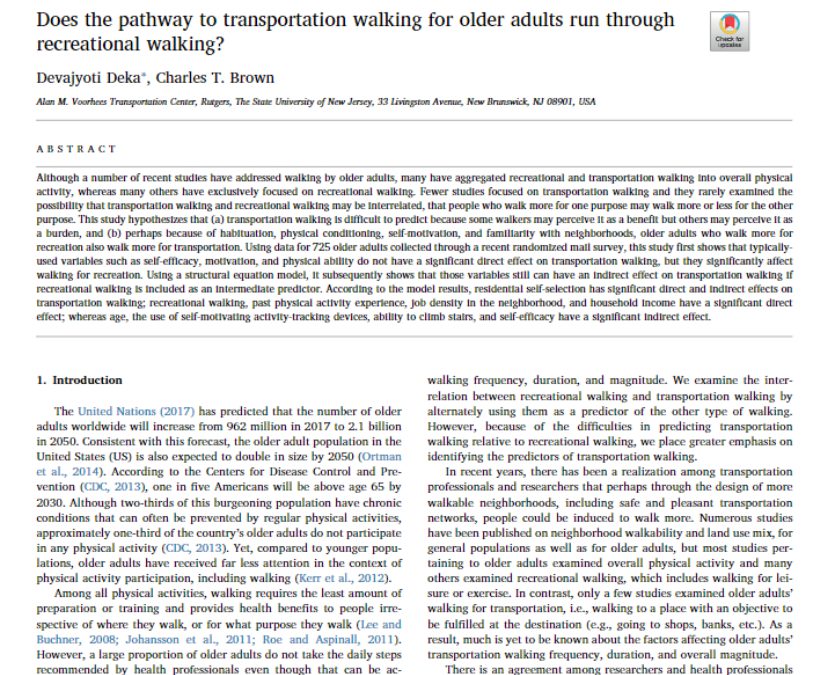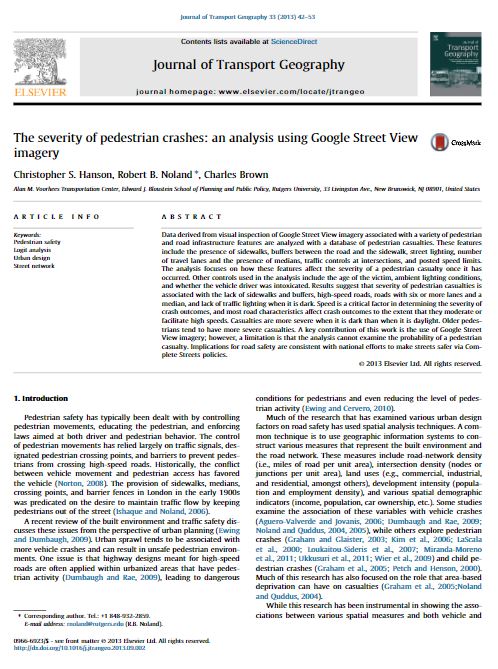Although a number of recent studies have addressed walking by older adults, many have aggregated recreational and transportation walking into overall physical activity, whereas many others have exclusively focused on recreational walking.


Although a number of recent studies have addressed walking by older adults, many have aggregated recreational and transportation walking into overall physical activity, whereas many others have exclusively focused on recreational walking.

To examine how violent crime affects people’s recreational and transportation walking duration in daytime and after dark on a typical day.

Issues that relate to distracted driving and walking are discussed by presenting results from a survey of planning professionals, police officers, and pedestrians in New Jersey.

An effort to benchmark the current state of travel by a unique set of travelers, transit riders who travel to stations by bicycle.

The analysis presented here is of a candidate road diet conversion site, Livingston Avenue in New Brunswick, New Jersey, an oversized arterial corridor accessing the center of the city.

Data derived from visual inspection of Google Street View imagery associated with a variety of pedestrian and road infrastructure features are analyzed with a database of pedestrian casualties.

The primary objective of this study was to estimate the statewide economic impacts of active transportation in New Jersey in one year.

A survey of New Jersey residents specifically focused on people’s valuation of different types of bicycle and pedestrian infrastructure and the reasons for their valuation in two large regions of the state.
Induced travel elasticities associated with new road capacity are typically estimated for roads of higher functional classifications, such as interstate freeways and principal arterials. These are estimated as “own” elasticities, that is an increase in lane kilometers...
There is a growing perception that e-scooters are more dangerous than bicycles and e-bikes, with towns implementing measures to ban their usage. Yet, there is not much evidence from large scale surveys to substantiate this claim. Nearly 14,000 micromobility injuries...
We compare charging station accessibility for different income groups in the San Francisco Bay Area. Using a microsimulation model, we estimate charging station accessibility under varying battery range scenarios, assuming different income groups have vehicles with...
The New Jersey Micromobility Guide serves as a resource for micromobility users across the state, collecting and summarizing the laws and safety best practices that can make riders safer. Micromobility, which includes e-bikes, e-scooters, and other low-speed devices,...